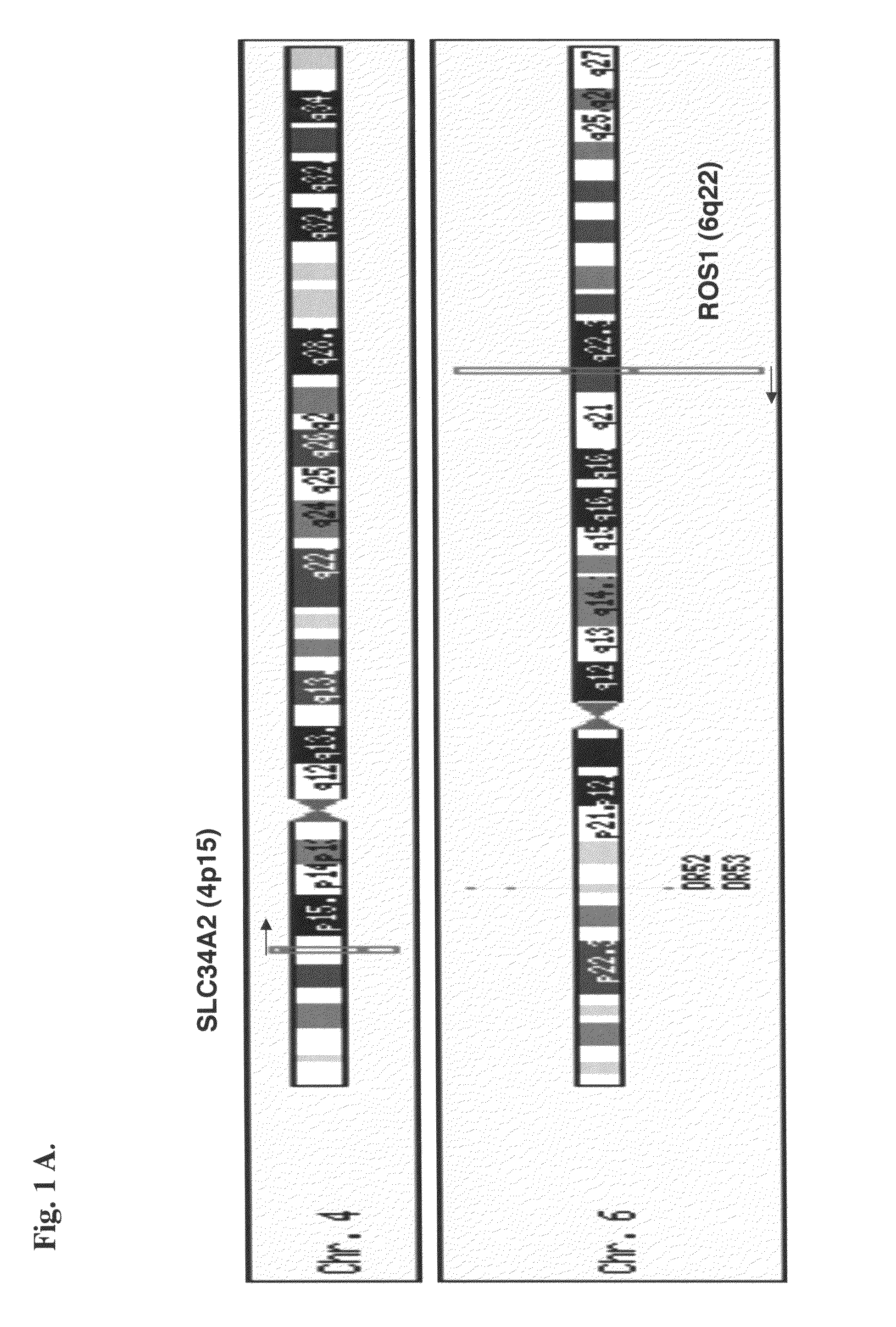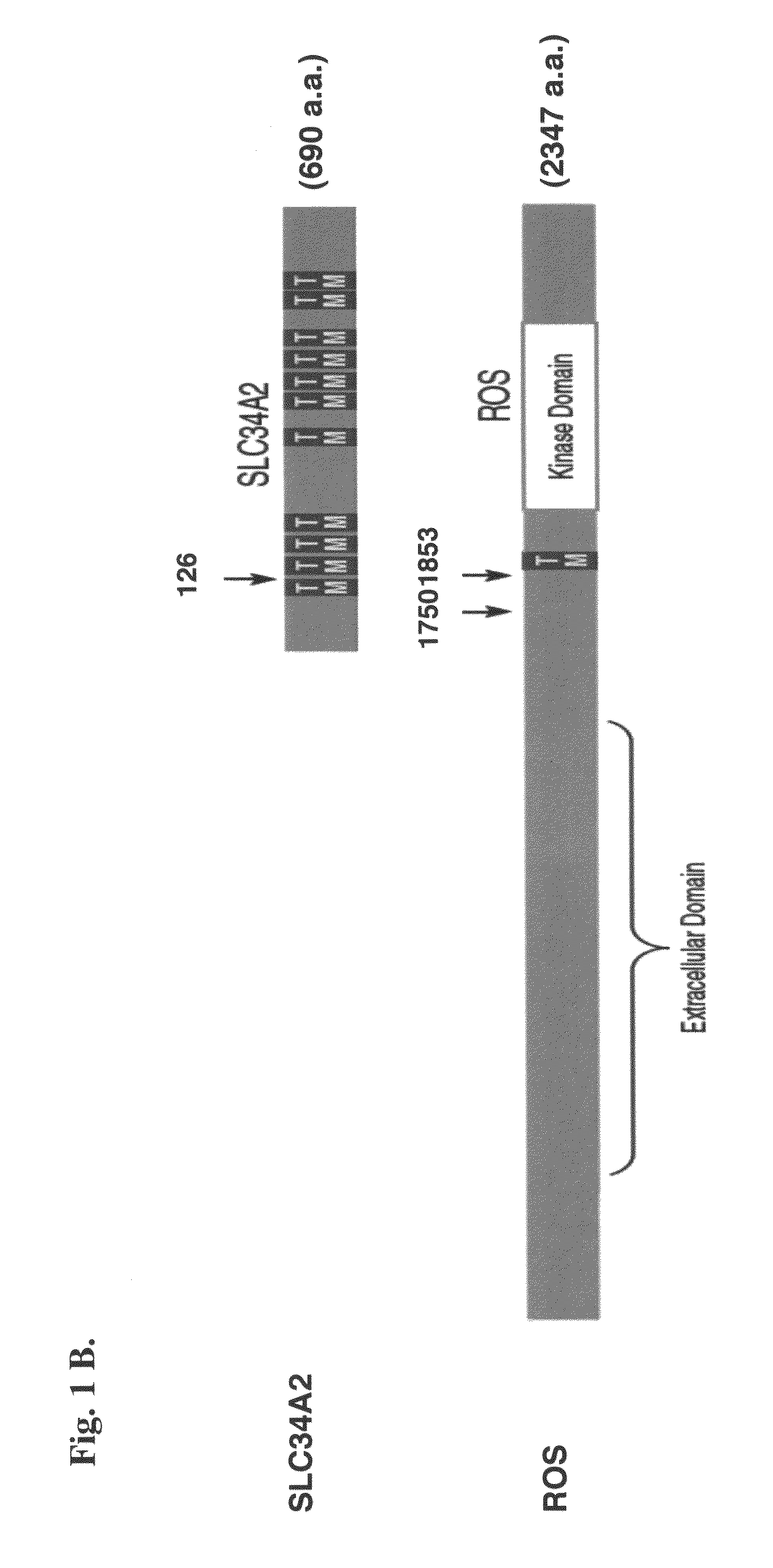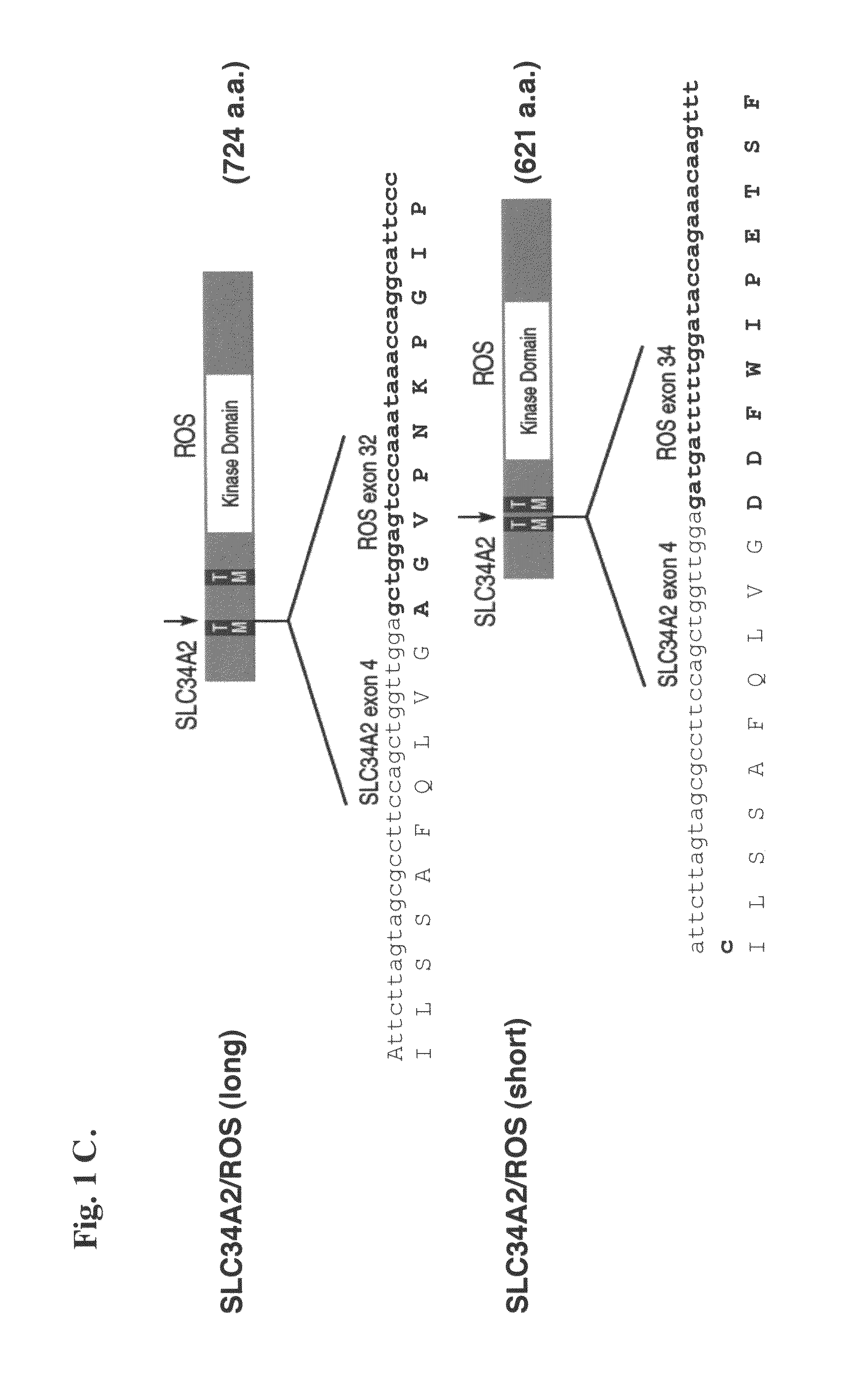Translocation and mutant ROS kinase in human non-small cell lung carcinoma
a ros kinase and mutant technology, applied in the direction of fusion polypeptides, dna/rna fragmentation, fungi, etc., can solve the problems of unreported translocations of human nsclc cancer that involve protein kinases, uncontrolled growth and proliferation of cells, and inability to achieve the effect of restoring ros kinase activity and driving the proliferation and survival of nscl
- Summary
- Abstract
- Description
- Claims
- Application Information
AI Technical Summary
Benefits of technology
Problems solved by technology
Method used
Image
Examples
example 1
Identification of ROS Kinase Activity in an NSCLC Cell Line by Global Phosphopeptide Profiling
[0268]The global phosphorylation profile of kinase activation in several human NSCLC cell lines, including HCC78, were examined using a recently described and powerful technique for the isolation and mass spectrometric characterization of modified peptides from complex mixtures (the “IAP” technique, see Rush et al., supra). The IAP technique was performed using a phosphotyrosine-specific antibody (CELL SIGNALING TECHNOLOGY, INC., Beverly, Mass., 2003 / 04 Cat. #9411) to isolate, and subsequently characterize, phosphotyrosine-containing peptides from extracts of the NSCLC cell lines.
[0269]Specifically, the IAP approach was employed go facilitate the identification of activated tyrosine kinases in the NSCLC cell lines, in order to identify novel drivers of this disease.
Cell Culture.
[0270]HCC78 cells were obtained from DSMZ (the German National Resource Centre for Biological Material), grown in ...
example 2
Western Blot Analysis of ROS Kinase Expression in a NSCLC Cell Line
[0282]The observation that the HCC78 NSCLC cell line—but not the other NSCLC cell lines—expresses activated ROS kinase was confirmed by Western blot analysis of cell extracts using antibodies specific for ROS and other receptor tyrosine kinases (RTKs) and downstream kinases.
[0283]HCC78 cells were lysed in 1× cell lysis buffer (Cell Signaling Technology) supplemented with Protease Arrest™ (G Biosciences) and separated by electrophoresis. All antibodies and reagents for immunoblotting were from Cell Signaling Technology, Inc. (Beverly, Mass.). Western blotting was carried out as described in “Western Immunoblotting Protocol” (Cell Signaling Technology, Inc., 2005-2006 catalogue). Anti-ROS antibody was obtain from Santa Cruz Biotechnology, Inc.
[0284]FIG. 5 shows the western blot results. Only HCC78 express ROS protein among many different NSCLC cell lines. ROS protein in HCC78 has much smaller molecular weight than wild...
example 3
[0286]Growth Inhibition of Abnormal ROS Kinase-Expressing Mammalian NSCLC Cell Lines Using siRNA
[0287]In order to confirm that the truncated form of ROS is driving cell growth and survival in the HCC78 cell line, the ability of siRNA silencing to inhibit growth of these cells was examined. The expression of ROS was down regulated by RNA interference. The following ROS siRNA was ordered from Proligo, Inc., with corresponding ROS sequences indicated in parentheses:
[0288]
(SEQ ID NO: 23)5′AAGCCCGGAUGGCAACGUUTT3′ (ROS1(6318-6340);(SEQ ID NO: 24)5′AAGCCUGAAGGCCUGAACUTT3′ (ROS1(7181-7203).
[0289]2×105 cells were seeded in 12 well plates the day before the transfection. 100 nM ROS1 siRNA was transfected using Mirus TransIT-TKO Transfection Reagent. 48 hours after transfection, cells were switched to starvation medium for additional 24 hours. Cells were harvested by trypsinization and counted then, and cell lysate was used in WB to check ROS protein level.
[0290]Immunoblot analysis revealed th...
PUM
| Property | Measurement | Unit |
|---|---|---|
| Tm | aaaaa | aaaaa |
| Tm | aaaaa | aaaaa |
| Tm | aaaaa | aaaaa |
Abstract
Description
Claims
Application Information
 Login to View More
Login to View More - R&D
- Intellectual Property
- Life Sciences
- Materials
- Tech Scout
- Unparalleled Data Quality
- Higher Quality Content
- 60% Fewer Hallucinations
Browse by: Latest US Patents, China's latest patents, Technical Efficacy Thesaurus, Application Domain, Technology Topic, Popular Technical Reports.
© 2025 PatSnap. All rights reserved.Legal|Privacy policy|Modern Slavery Act Transparency Statement|Sitemap|About US| Contact US: help@patsnap.com



